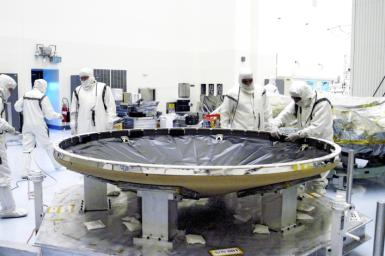Yes, I have since been taken to the woodshed by another member of my Planetary Science webgroup (who shall remain nameless) regarding my misinterpretation of what I was looking at:
"The 'white' sheet is the base layer of a series of sheets of material,
capped by a reflective mylar layer - the innermost part of a
multi-layer thermal protection system. This consists of a structural
frame, an outside ablative layer of what Gary Allen advises is
ground-up cork and resin binder, and an inner thermal blanket to stop
residual heat getting through to the rover.
"What is perhaps confusing you is that the piece of the wreckage that
is standing up on its side has been almost flipped inside out.
"
http://www.lyle.org/~markoff/processed/1P1...78L234567M1.JPG"The dark 'knobbly' material is the heated and partly ablated TPS. The
broken edge at the left shows the paler-brown surface that has been
altered by re-entry heat compared to the thicker dark unaltered
material. You can see parts of the mylar layer, and the underlying
white blanket that has been everted over it."
Well, that's what I get for not actually looking up the structure of the heat shield -- I was thinking vaguely of the flexible entry-thermal blankets that cover those parts of the Shuttle exposed to minimum heating.





